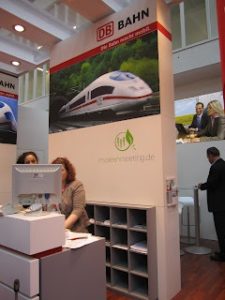Transportation of containers is one of the more interesting types of cargo transportation. This will require a well-organized and systematic work of a team of specialists, which guarantee the safe and efficient transportation of containers.
The peculiarity of this transportation is the need for fastening the delivered containers in certain places and placing the cargo on the stiffeners, installed by the manufacturer. Not following these requirements, it is possible to damage or deform the container during transportation seriously.
 When installing on a semi-trailer, specialized stops or lodges are used. It is obligatory that in the field of installation of lodgments, there is a floor and this is a significant problem with a considerable length of the Event setup transportation. In this case, the use of removable tables is required. Another of the features is the large diameter of the container, which increases the transport height and width and there is a need for special tracking of the cargo, which leads to careful research and a clear planning of the route through which the containers will be transported.
When installing on a semi-trailer, specialized stops or lodges are used. It is obligatory that in the field of installation of lodgments, there is a floor and this is a significant problem with a considerable length of the Event setup transportation. In this case, the use of removable tables is required. Another of the features is the large diameter of the container, which increases the transport height and width and there is a need for special tracking of the cargo, which leads to careful research and a clear planning of the route through which the containers will be transported.
Mandatory requirements for the transport of containers:
- Availability of necessary vehicles, modern equipment intended for transportation of containers and corresponding to established standards
- Availability of specialized places for loading/unloading containers;
- Availability of professional equipment for loading large-sized tanks;
- Careful handling of containers.
Transportation of containers is a laborious and complex process, requiring the implementation of precautionary measures. In tanks deliver a liquid cargo of various types: liquefied gases, petroleum products, food liquids, liquid waste, etc.
Transportation of containers with liquids should be carried out according to the rules:
- The choice of a tank for the carriage of bulk cargo is determined by its properties;
- Deliver petroleum products, chemical goods, and liquid food products in containers of one type is prohibited;
- For each type of liquid cargo, there is a special container, suitable for its transportation.
When transporting many liquid cargoes, it is necessary to comply with some stringent technological requirements:
- Flammable and explosive liquid shipments must be delivered in tanks of special strength and fire resistance.
The liquid cargo products sometimes needs to be transported in a refrigerated state, so for their transportation, the tanks must have the necessary thermal insulation characteristics.
Freight tanks are also equipped with a heating system if necessary since the heating of containers during transport is mandatory for certain food liquids, the temperature of which must not be lowered during transport below the established level.
Compliance with the terms of transportation and temperature conditions is the most critical condition for liquid food products to be delivered in excellent condition.
Building liquid mixtures, namely concrete, asphalt, and many others during transport during the cold season should be heated. Dangerous goods transportation is carried out by the issued permit in the ATS at the place of the consignor. When delivered in tanks, especially hazardous goods are under protection. When carrying dangerous and hazardous liquids, containers are marked accordingly.
To the organization of cargo transportation of bulk cargoes, as well as to handling and handling operations, stringent requirements are imposed. The containers must be thoroughly cleaned before the load is transported. To fill the tank for delivery by liquid cargo is necessary entirely. Incomplete capacities adversely affect the handling of vehicles.